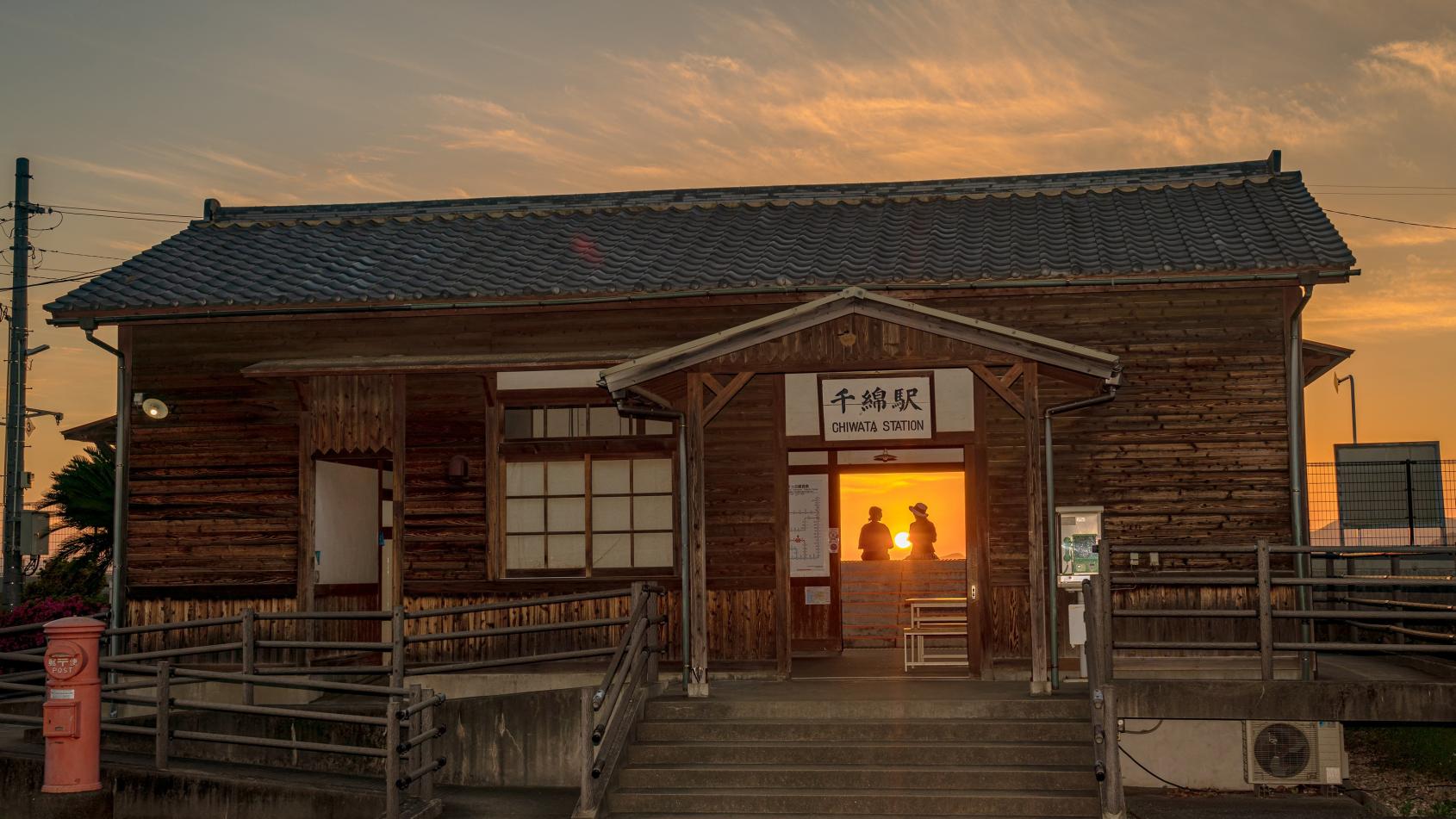 A Pilgrimage Following the Tracks of Previous Papal Visits (1 Day)
A Pilgrimage Following the Tracks of Previous Papal Visits (1 Day)
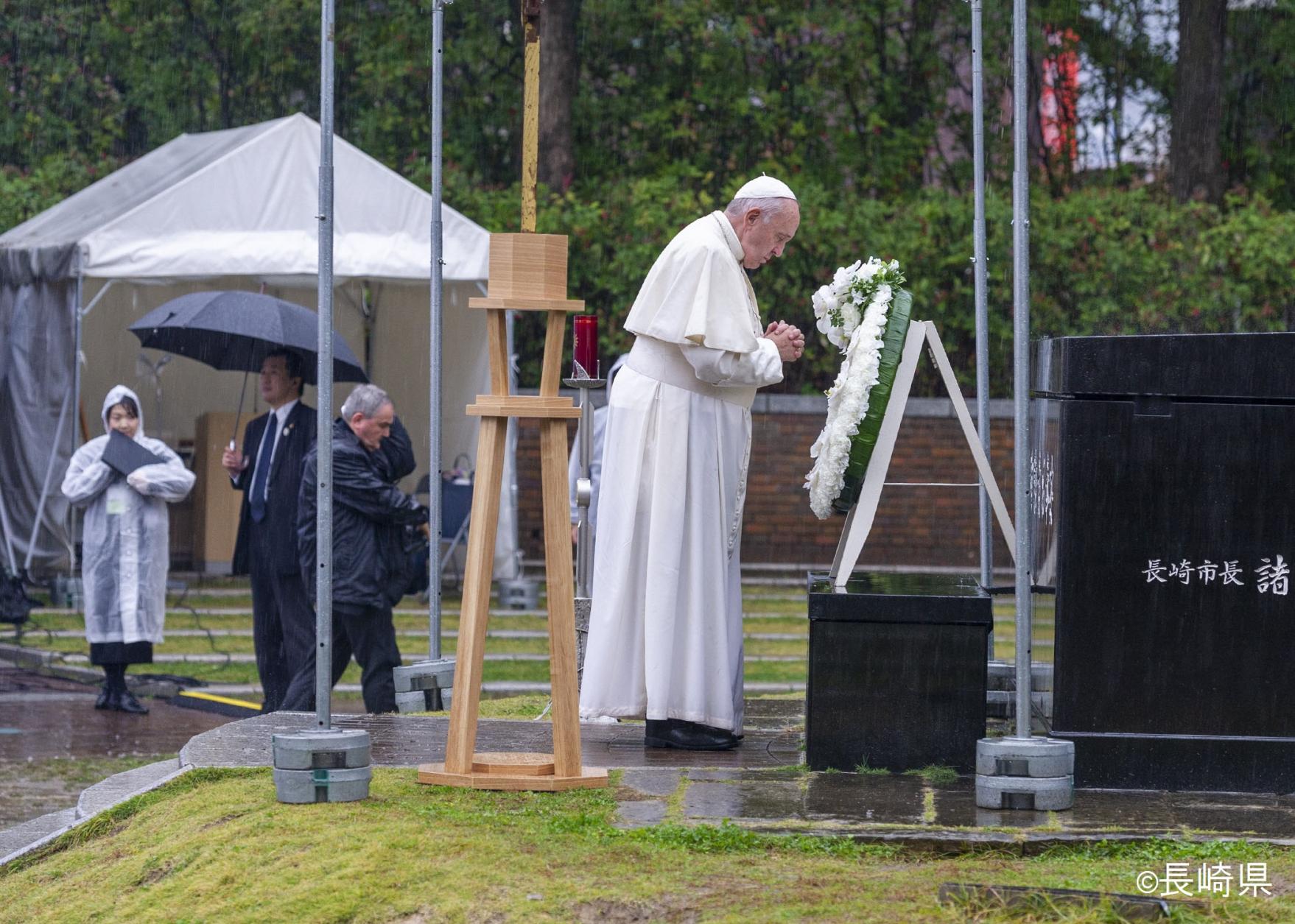
In 2019, Pope Francis visited Japan, including Nagasaki, with "Protect All Life" as the theme of his tour, and Pope John Paul II also visited Nagasaki in 1981.
Use the Nagasaki tram system to travel around the central part of Nagasaki City, and to follow the tracks of both Popes.
Using a one-day tram ticket is recommended.
・Transportation: Walking, Tram
- Required Time:1day
- Means of Transportation:walk, by tram
-
Print
START
Approx. 10 min. walk from Nagasaki Station
The Twenty-Six Martyrs Museum and Monument / Nishizaka Park
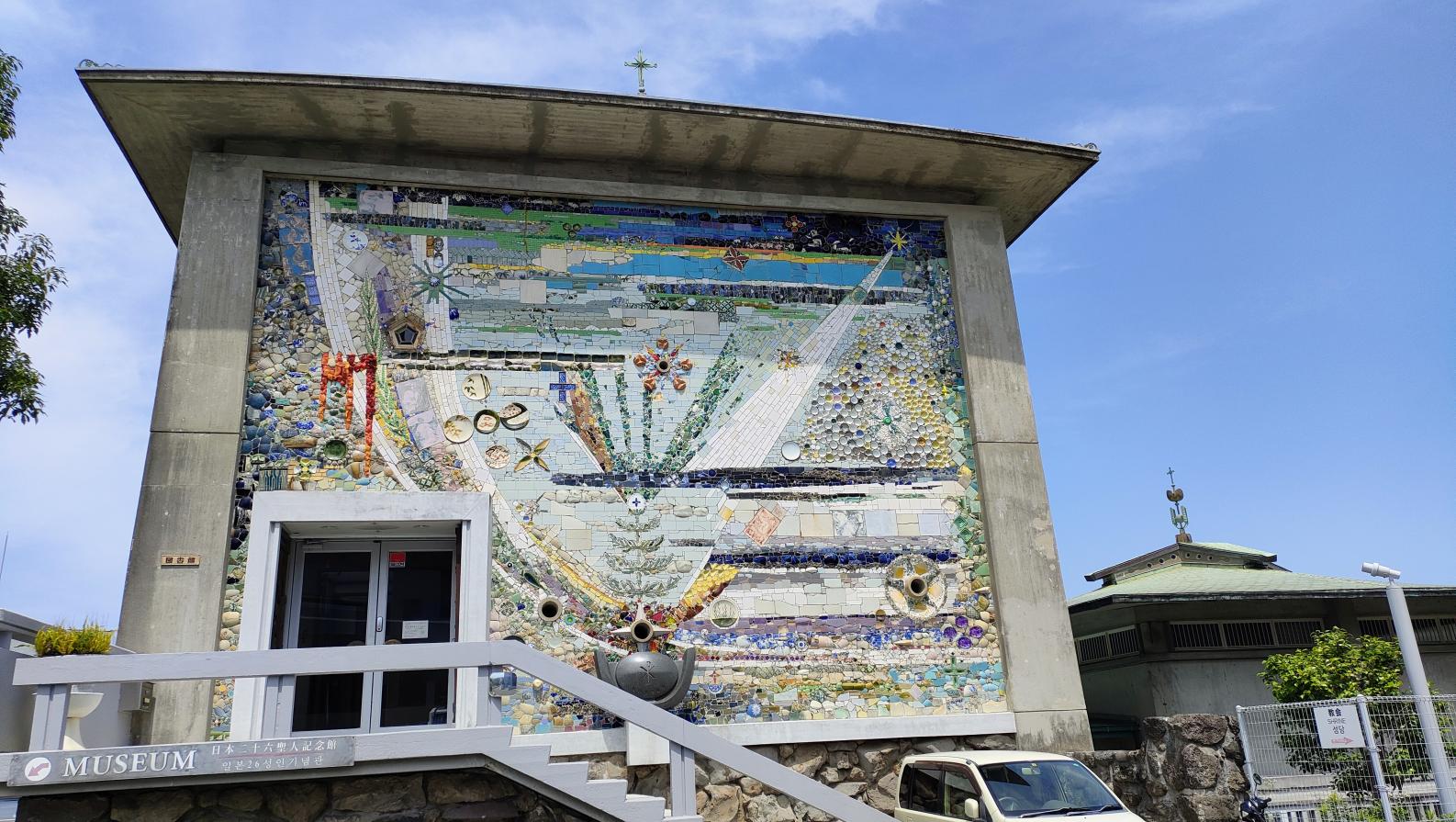
Background
In the late 1500s, the government had begun to grow wary of foreign influence. To gain complete control over Kyushu, Toyotomi Hideyoshi issued an order to expel all priests from the country. The growing tension culminated in the arrest of six missionaries (including Spaniards, Mexicans, and Portuguese) and eighteen Japanese Christians in Kyoto and Osaka (some of whom had come from Nagasaki). They were forced to make the 800km walk to Nagasaki, chosen for its significant Christian population. They were joined by two more Catholics along the way. The journey took a month to complete, and when they finally made it to Nishizaka Hill, they were executed in front of the masses. Many more tragically followed. The martyrs were beatified in 1627, and canonized by the Pope in 1862.
The Twenty-Six Martyrs Monument
A monument dedicated to St. Paul Miki and his twenty-five companions was built at the site of the martyrdom in commemoration of the 100th anniversary of their canonization. This monument faces Oura Cathedral which is also dedicated to the martyrs.
The Twenty-Six Martyrs Museum
Behind the monument stands the Twenty-Six Martyrs Museum. At this museum, visitors can learn about the history of Christianity in Nagasaki - its rise, its prohibition, and its revival. A collection of items showcasing the lives of Christians as they hid from the authorities are on display here. These artifacts include the scroll Our Lady of the Snows (meticulously preserved by the faithful Hidden Christians in spite of the risk it posed), the "Maria Kannon" – a figurine shaped like the Buddhist Kannon used by Hidden Christians as the statue of Mary for worship, and personal belongings amongst others. There is also a collection of old maps and an original letter of St Francis Xavier's. A replica of the scroll of St. Mary of the Snows appears in the movie Silence.
| Address | 850-0051 長崎県長崎市西坂町7-8 | |
|---|---|---|
| TEL | 095-822-6000 | |
| Hours of Operation | 9:00~17:00 |
Approx. 10 min. walk, then 20 min. by tram (Nagasaki Station Tram Stop〜Shinchi Chinatown Tram Stop〜Oura Cathedral Tram Stop), and then approx. 5 min. walk
Oura Cathedral / La cathédrale d’Oura
Hidden Christian Sites in the Nagasaki Region / Les Sites chrétiens cachés de la région de Nagasaki
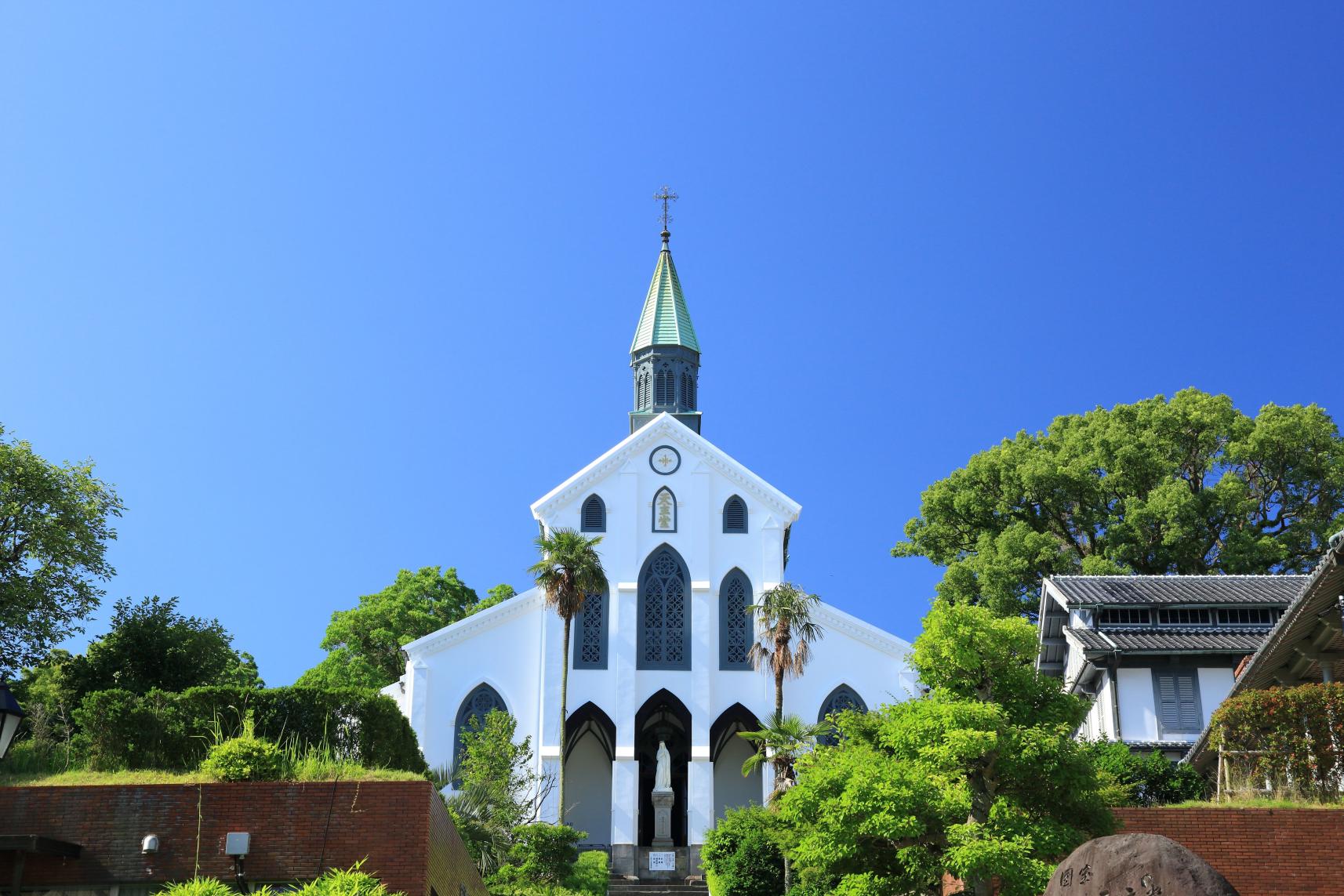
Oura Cathedral is located on a hill facing the Port of Nagasaki in the south of the Nagasaki region. Its precincts contain the parish house, the church building that was initially built for the foreigners within the Nagasaki Foreign Settlement, a seminary and a catechist school (both of which were established for missionary work after the lifting of the ban on Christianity).
Oura Cathedral stands within the former Foreign Settlement established in Oura after Japan opened its ports to overseas trade. In 1862, Father Furet of the Paris Foreign Missions Society selected the location to construct the church for use as the base of the Society’s mission in Nagasaki.
Within the precincts of the cathedral, a parish house was built first in 1863, then the church building itself was built in 1864. It had a Gothic-style exterior with three belfries. The floor plan had three naves, and its façade had a building plaque just like Buddhist temples, reading ‘Tenshudo’ (literally meaning ‘church’). It was dedicated to the 26 Catholics who were martyred in Nagasaki in the 16th century and canonised in 1862. The building faces in the direction of Nishizaka, their martyrdom site.
In 1865, soon after the dedication ceremony, a dozen Hidden Christians from Urakami Village in Nagasaki visited the church, and one of them approached Father Petitjean saying ‘We are of one heart with you’, and revealed their secret faith. News of this dramatic event, which came to be called the ‘Discovery of Hidden Christians’, immediately reached the Hidden Christian communities in the Nagasaki region, encouraging their leaders to visit the missionaries at the church as well.
Such contact with the missionaries brought about a transitional phase of the Hidden Christian communities and prompted various reactions among them. Those who decided to receive guidance from the missionaries revealed their faith in public, although the ban on Christianity was still in effect. As a result, the Tokugawa Shogunate arrested the Hidden Christians in Urakami in 1867, and the Meiji Government which continued the Shogunate’s policy of banning Christianity exiled more than 3,000 of them to twenty domains throughout Japan and tortured them in order to make them recant their faith. This incident is called ‘Urakami Yonban Kuzure’. On the Goto Islands, those Hidden Christians who revealed their faith in public were captured (Goto Kuzure), and on Hisaka Island, as many as 200 Hidden Christians were thrown in a jail cell roughly 19.8 square meters in area, killing many of them (the Royanosako Martyrdom). The missionaries of Oura Cathedral addressed the consulates of Western countries represented in Japan to help stop these persecutions. The Meiji Government lifted the ban in 1873 in response to increasing criticism from western countries, eventually putting an end to the suppression of Christianity in Japan.
Following the lifting of the ban, the Hidden Christian communities split into three groups: those who decided to receive guidance from the missionaries and join the Catholic Church as their ancestors did in the 16th century, those who decided to continue their unique way of practising the faith that they had developed for two and a half centuries, and those who converted to Buddhism or Shinto.
The missionaries of the church gave full catechistical instruction to the former Hidden Christians, placing great importance on the catechism and specific terms in Portuguese and Latin that had been introduced by the Catholic mission in the 16th century and that the religious communities of Hidden Christians had, hitherto, transmitted from generation to generation by themselves. The missionaries made coloured engravings and other materials for the mission as well. At the same time, they also reintegrated the distinctive ways of the Hidden Christians into the more conventional rituals and customs of Catholicism.
The church building underwent extension work to deal with an increasing number of Catholics attending church services after the lifting of the ban, and in 1879 the scale and the appearance of the building took on the form that is seen today. Within its precincts, the Latin Seminary and the Catechist School were established for the purpose of training Japanese clergy. The Latin Seminary was constructed in 1875, and the Japanese graduates were sent to the remaining Hidden Christian communities following the first graduation ceremony in 1879. The Catechist School was established around 1883 in order to train catechists to give catechistical instruction in the remaining Hidden Christian villages, in place of missionaries, so that it was easier to visit these villages scattered throughout such a large area. Many Japanese catechists graduated from the school, and until 1892 were sent to the Nagasaki region to carry out their missionary work. The Latin Seminary and the Catechist School provided the driving forces encouraging Hidden Christians to rejoin the Catholic Church during this transitional phase.
| Address | 850-0931 長崎県長崎市南山手町5-3 | |
|---|---|---|
| TEL | 095-823-2628(大浦天主堂) | |
| Hours of Operation | 8:30~18:00(Last entry at 17:30) |
Approx. 5 min. walk, then approx. 30 min. by tram (Oura Cathedral Tram Stop〜Shinchi Chinatown Tram Stop〜Peace Park Tram Stop), then immediately nearby on foot
Peace Park
A place of prayers for world peace and the souls of the atomic bomb victims
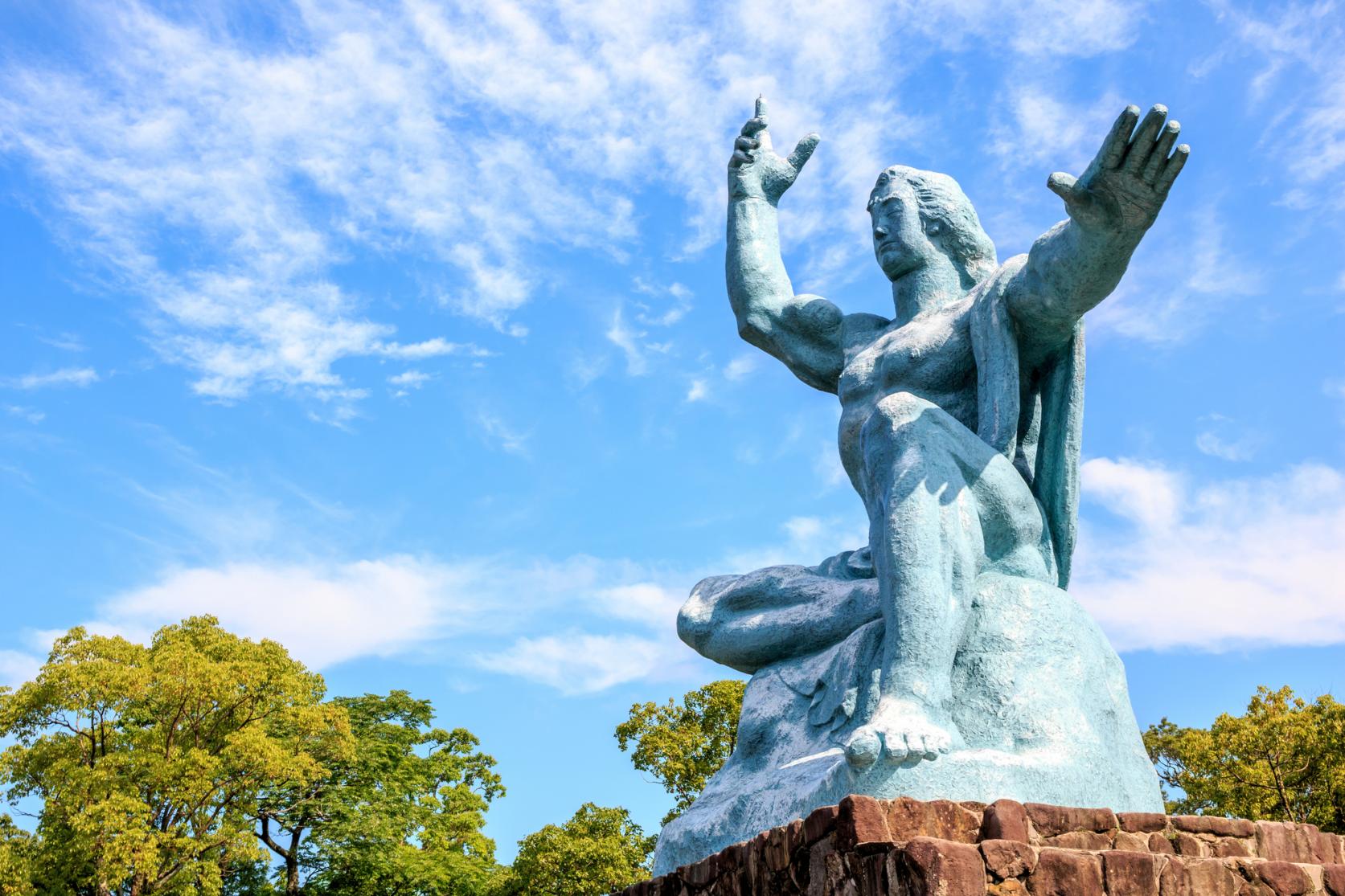
Nobel Peace Prize for 2024
The Norwegian Nobel Committee has decided to award the Nobel Peace Prize for 2024 to the Japanese organisation Nihon Hidankyo. This grassroots movement of atomic bomb survivors from Hiroshima and Nagasaki, also known
as Hibakusha, is receiving the Peace Prize for its efforts to achieve a world free of nuclear weapons and for demonstrating through witness testimony that nuclear weapons must never be used again.
| Address | 852-8118 長崎県長崎市松山町 | |
|---|---|---|
| TEL | 095-829-1162(長崎市土木部土木総務課) |
Approx. 5 min. walk
Nagasaki Hypocenter Park
Ground Zero of the Atomic Bombing in Nagasaki
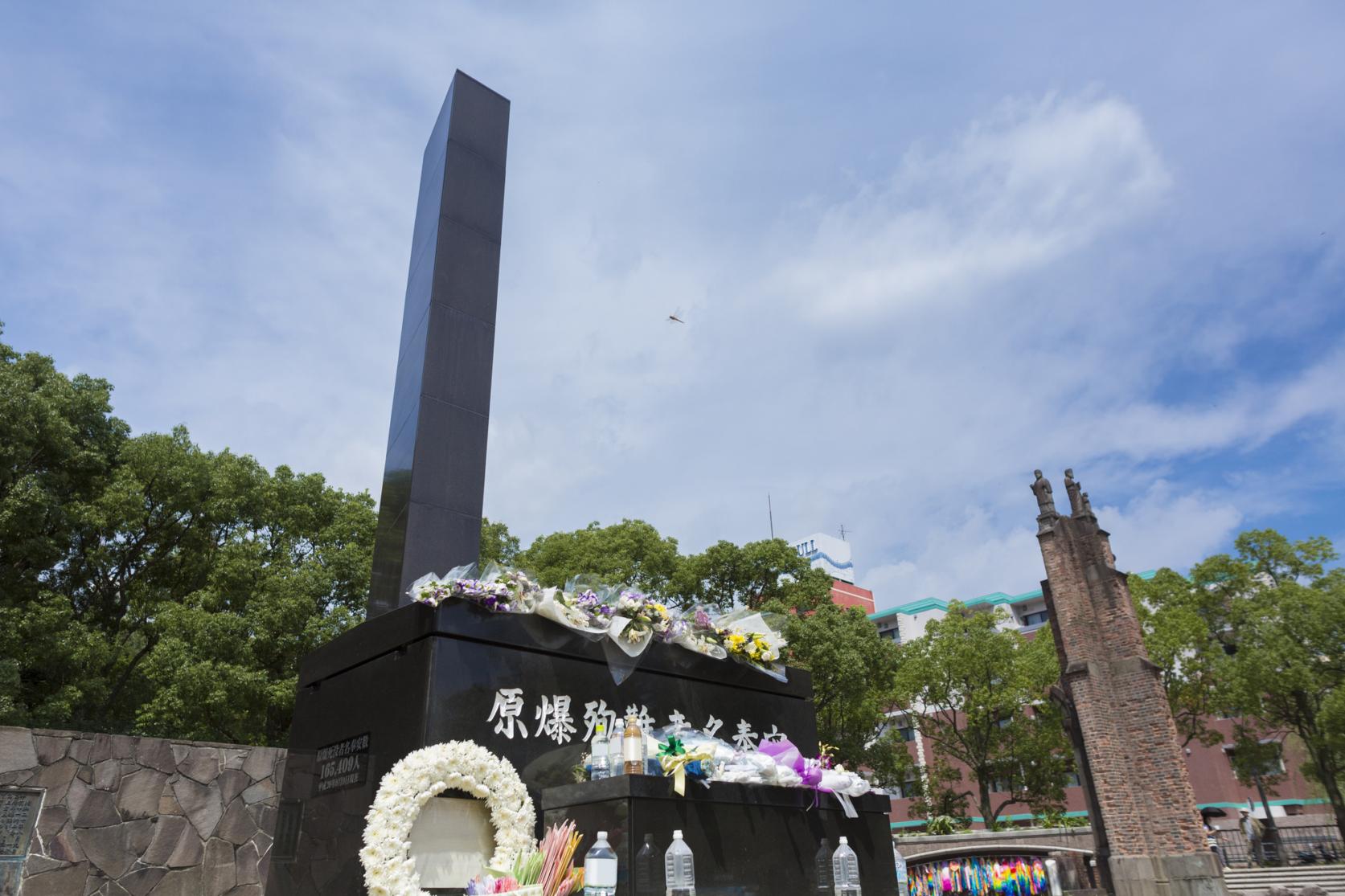
Nobel Peace Prize for 2024
The Norwegian Nobel Committee has decided to award the Nobel Peace Prize for 2024 to the Japanese organisation Nihon Hidankyo. This grassroots movement of atomic bomb survivors from Hiroshima and Nagasaki, also known
as Hibakusha, is receiving the Peace Prize for its efforts to achieve a world free of nuclear weapons and for demonstrating through witness testimony that nuclear weapons must never be used again.
| Address | 852-8118 長崎県長崎市松山町 | |
|---|---|---|
| TEL | 095-822-8888(長崎市コールセンターあじさいコール) | |
| Closed | 12/29~1/3 |
Approx. 5 min. walk
Nagasaki Atomic Bomb Museum
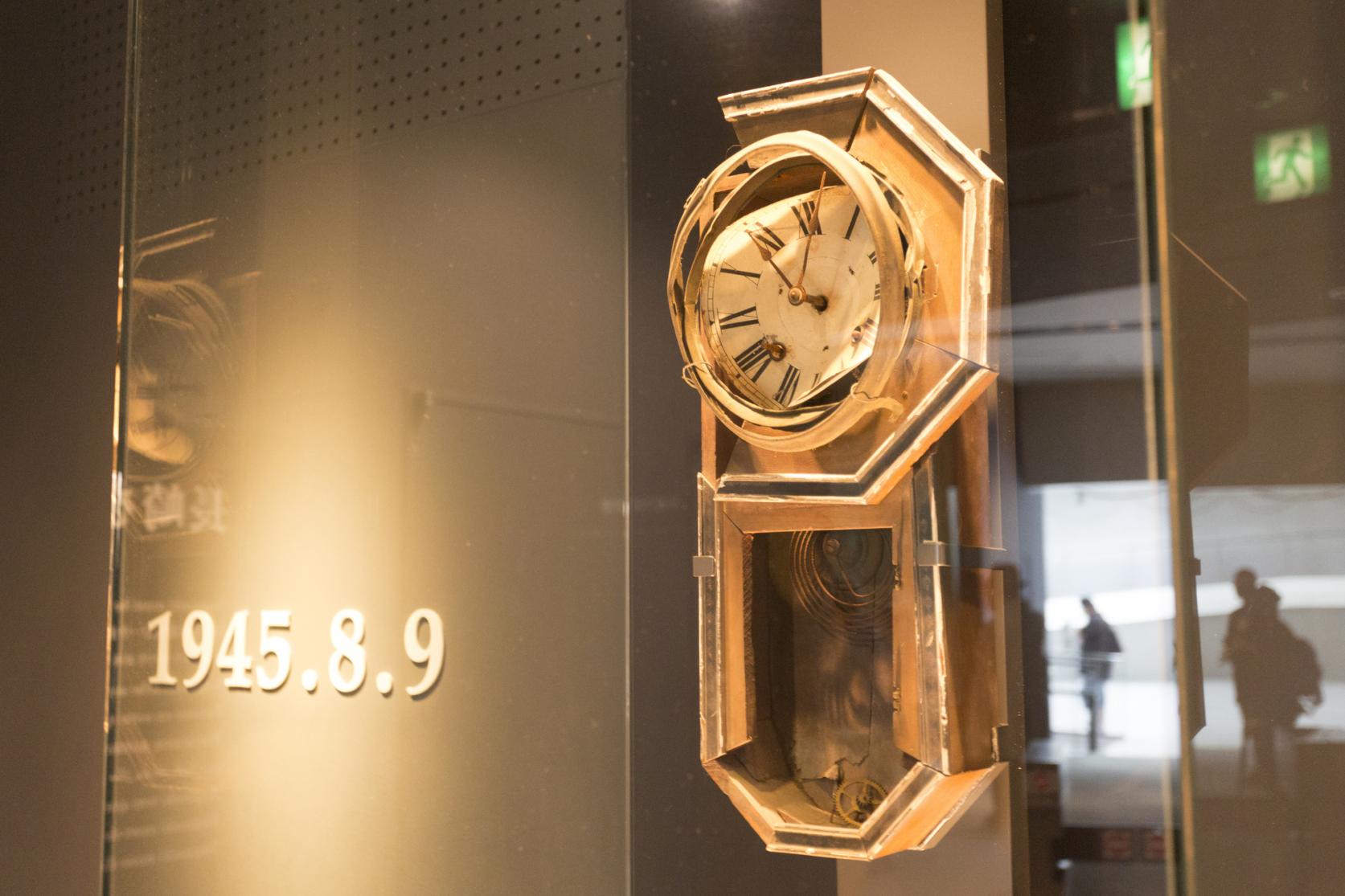
Nagasaki Atomic Bomb Museum covers the history of this event in the accessible form of a story. It begins with the disastrous scene of the attack and includes the events leading up to the dropping of the atomic bomb, the reconstruction of Nagasaki up to the present day, the history of nuclear weapons development, and the hope for a peaceful world free of nuclear weapons.
Comparing the scenes of Nagasaki immediately after the bombing with the appearance of the city today, one cannot help but be impressed by the remarkable spirit of survival and the immutable strength of the people of Nagasaki.
Nobel Peace Prize for 2024
The Norwegian Nobel Committee has decided to award the Nobel Peace Prize for 2024 to the Japanese organisation Nihon Hidankyo. This grassroots movement of atomic bomb survivors from Hiroshima and Nagasaki, also known
as Hibakusha, is receiving the Peace Prize for its efforts to achieve a world free of nuclear weapons and for demonstrating through witness testimony that nuclear weapons must never be used again.
| Address | 852-8117 長崎県長崎市平野町7-8 | |
|---|---|---|
| TEL | 095-844-1231 | |
| Hours of Operation | 8:30~17:30(Last entry at 17:00) ※Hours of operation may change depending on the season. |
Approx. 10 min. walk
Sanno Shrine and The One-Pillar Torii Gate
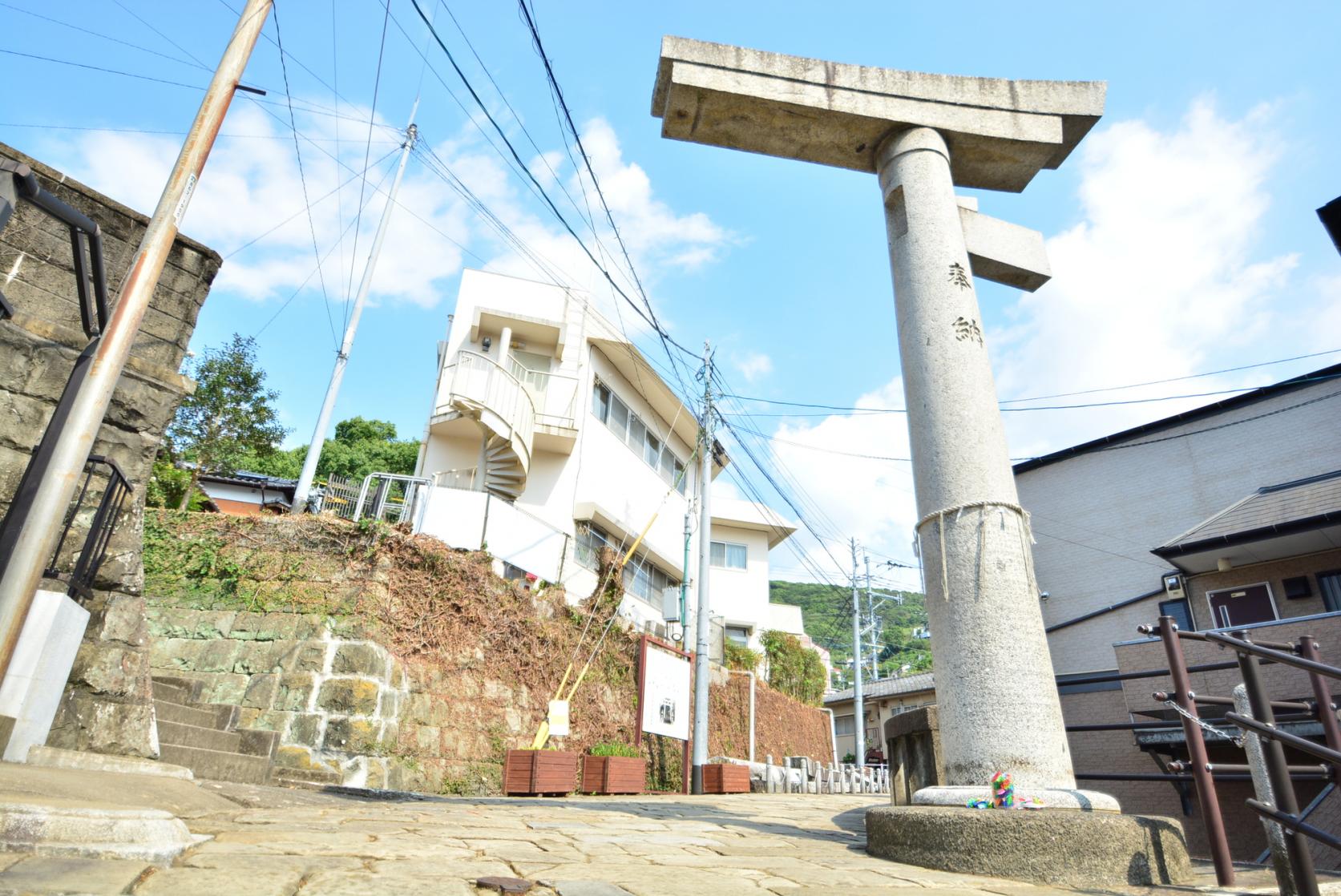
| Address | 852-8102 長崎県長崎市坂本2-6-56 | |
|---|---|---|
| TEL | 095-844-1415(山王神社) |
Approx. 15 min. walk
Urakami Cathedral
A Catholic church visited by the Pope
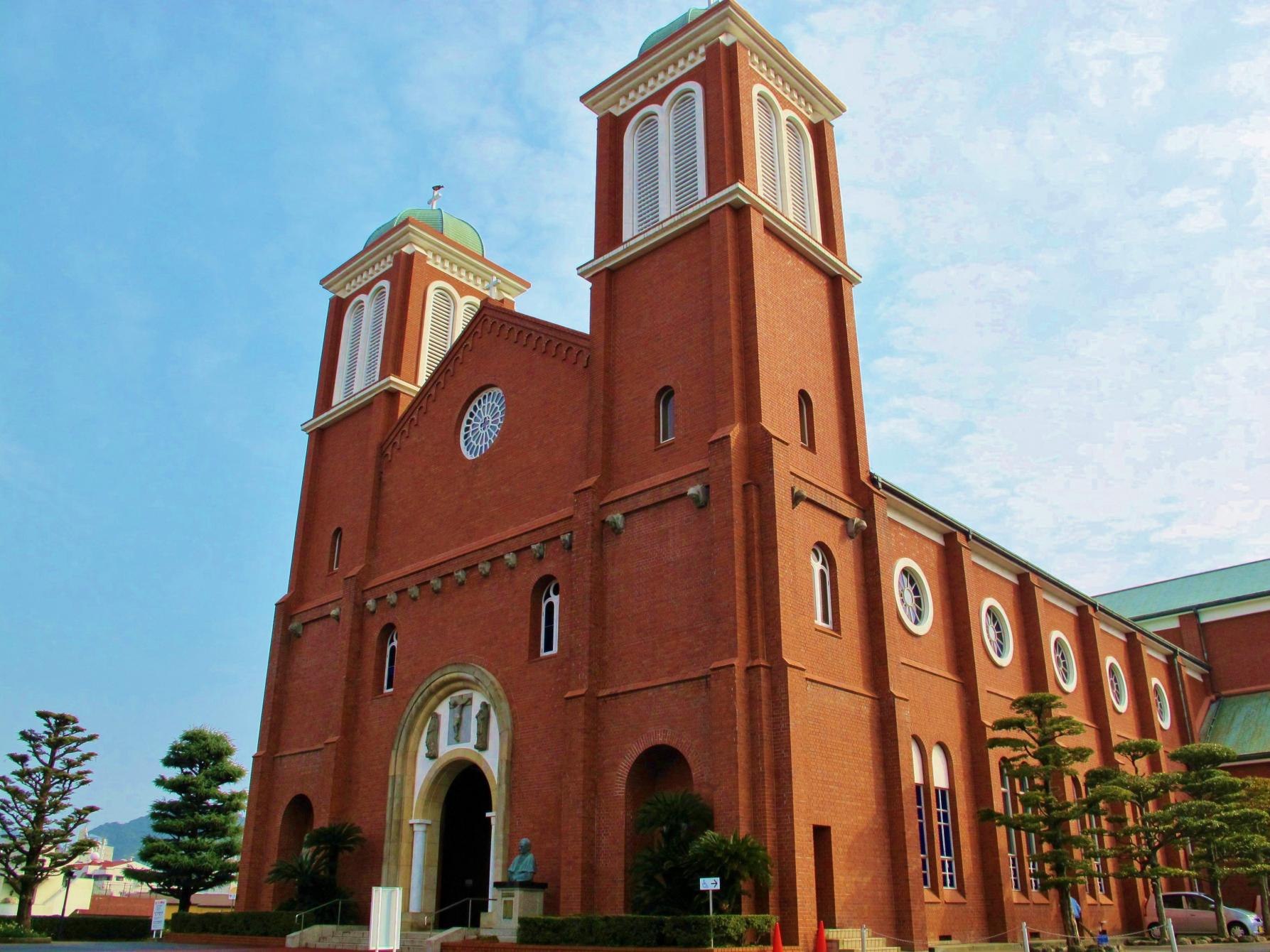
Suppression of Christianity was prohibited in 1873, and the newly free believers in Urakami planned this cathedral, which was completed in 1914. The best brick cathedral in the Orient, it was rebuilt after the destruction of the atomic bomb, then Pope John Paul II visited in 1981 and offered Mass.
Approx. 10 min. walk, then approx. 15 min. by tram (Peace Park Tram Stop~Nagasaki Station Tram Stop)
Nagasaki Station
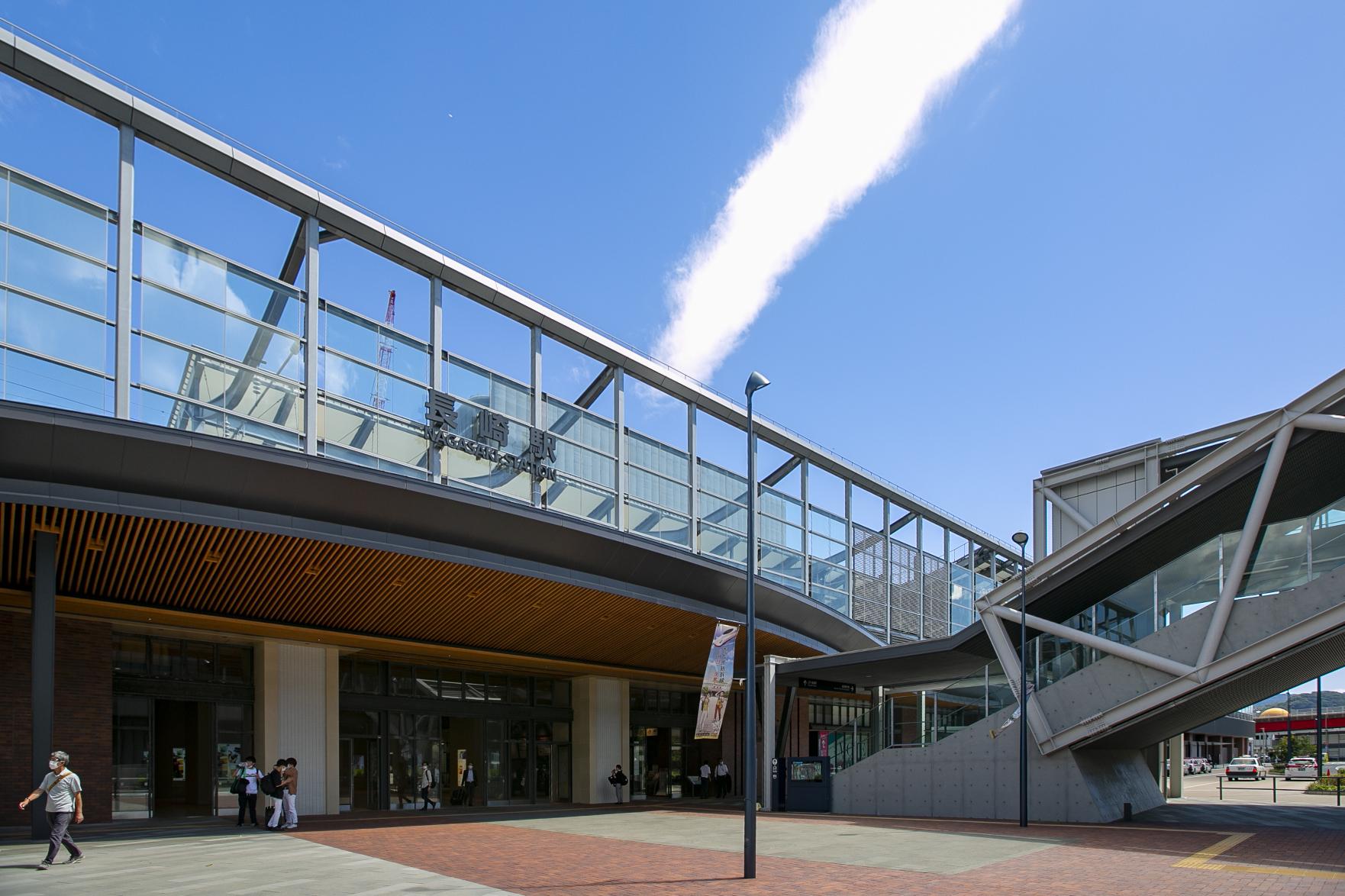
FINISH
Google Map may not be properly displayed if the volume per day exceeds the limit.



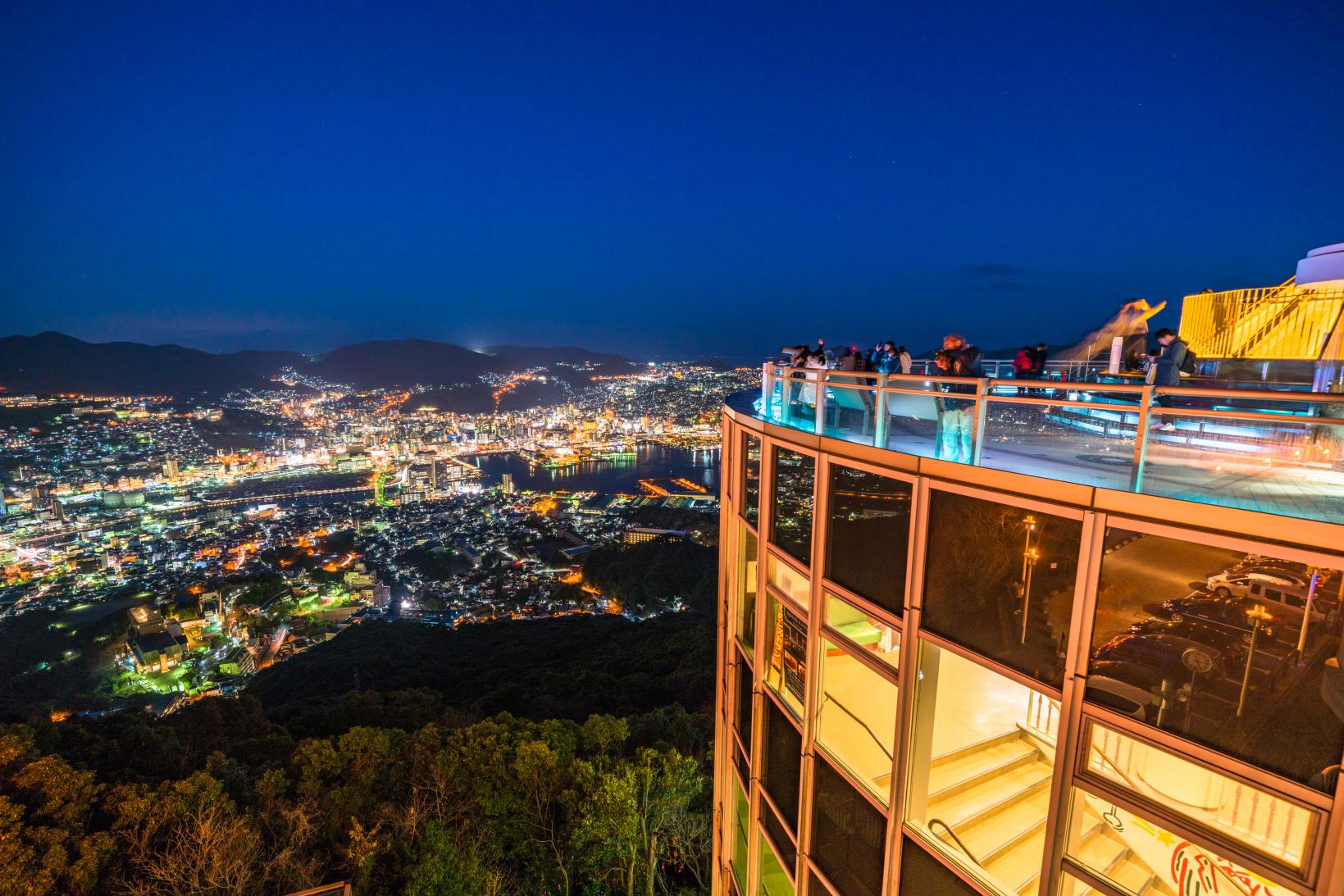
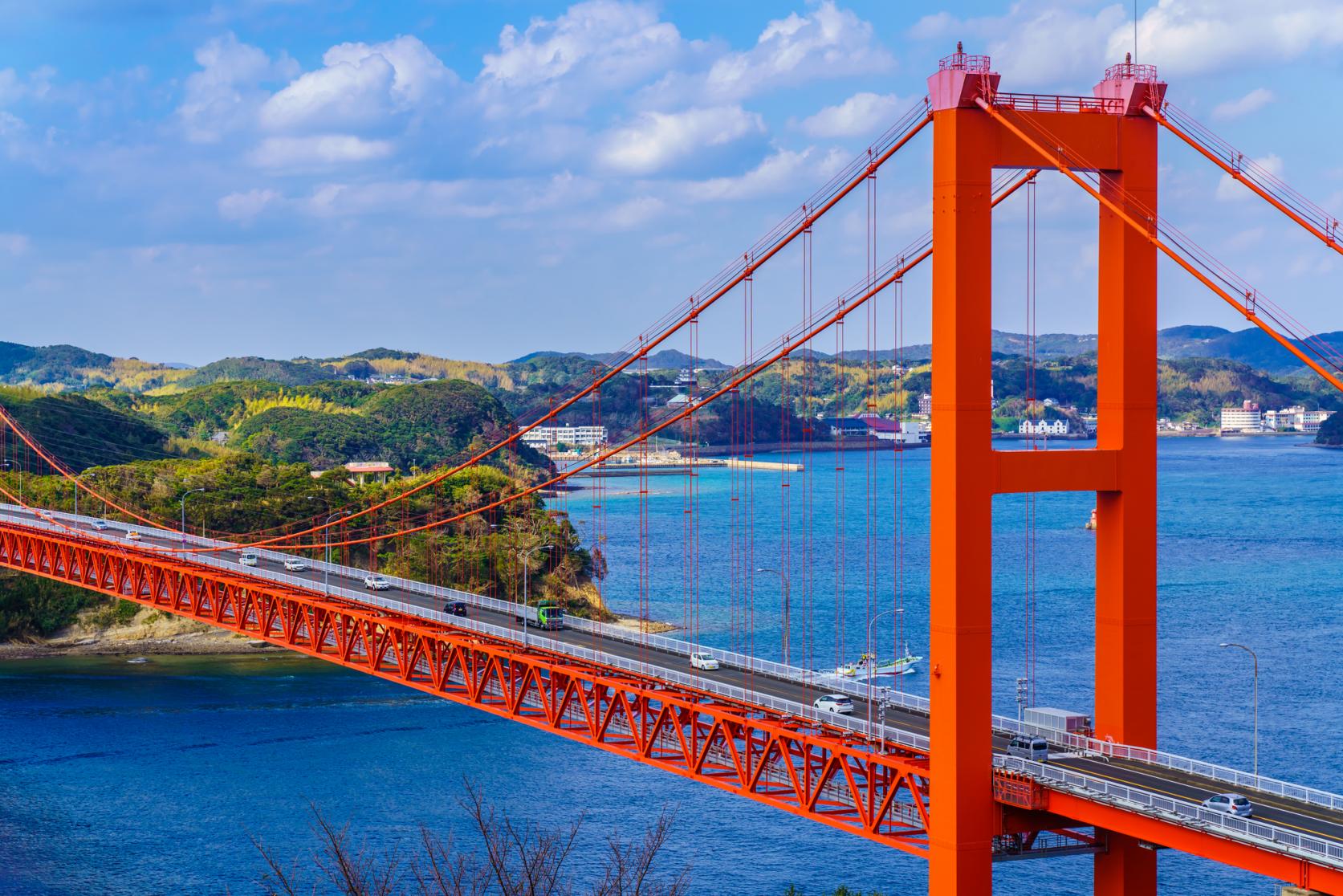
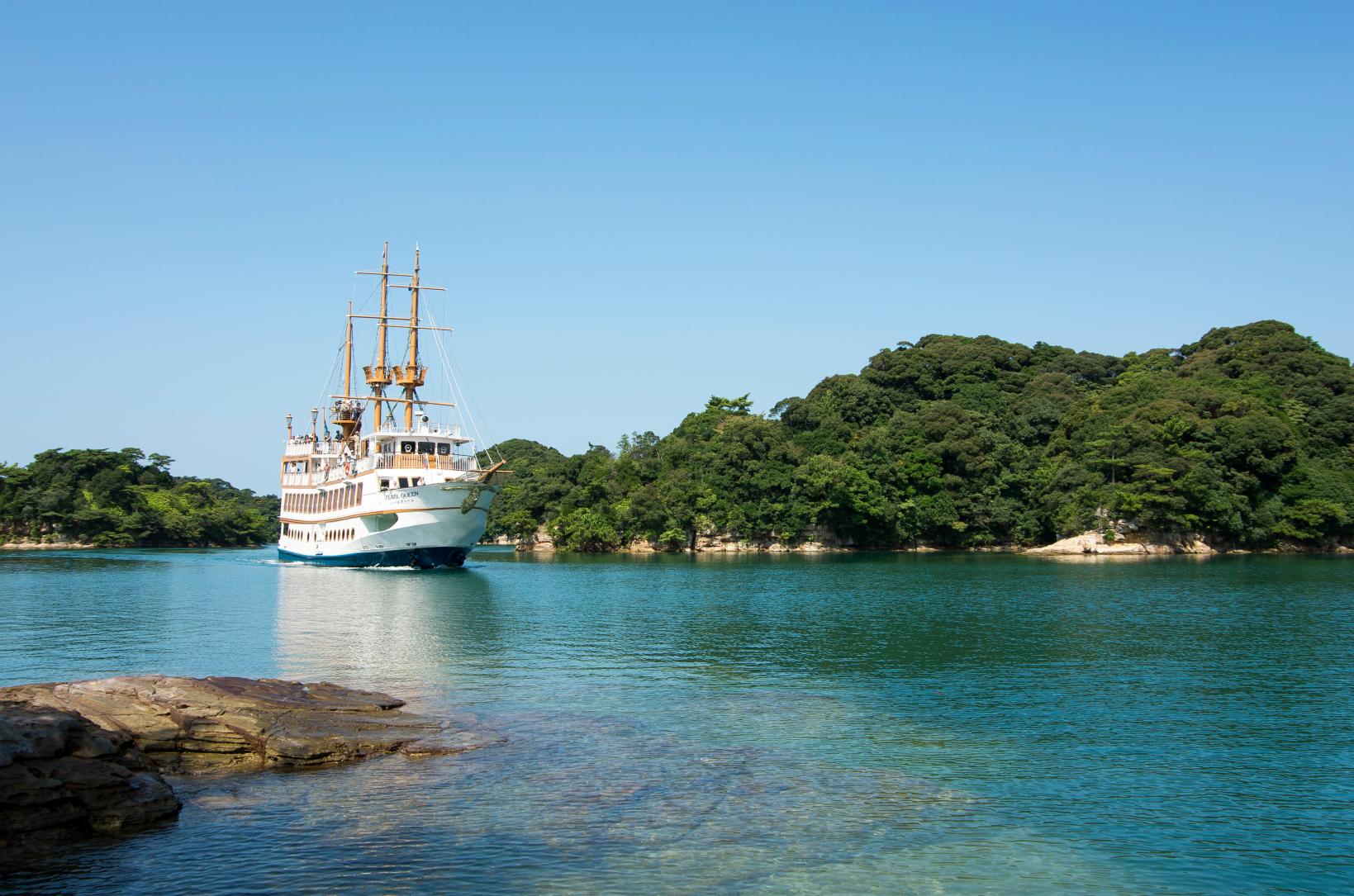
![[Starting from Kumamoto] Sightseeing in Kumamoto City & Unzen, Shimabara: A self-indulgent route around Goto-1](https://www.nagasaki-tabinet.com/storage/special_features/688/responsive_images/mQ8UXFjlMWs9jf2DJp7Ut1pIsLO7JGHPjeFlEHkc__1639_922.jpeg)
